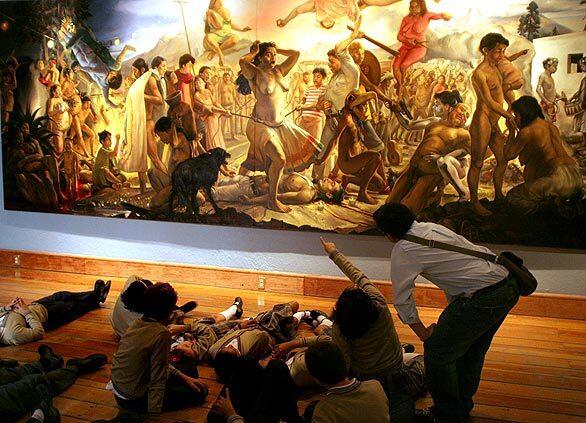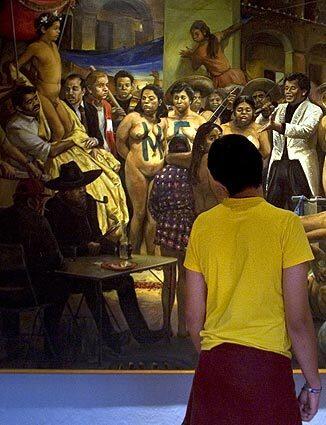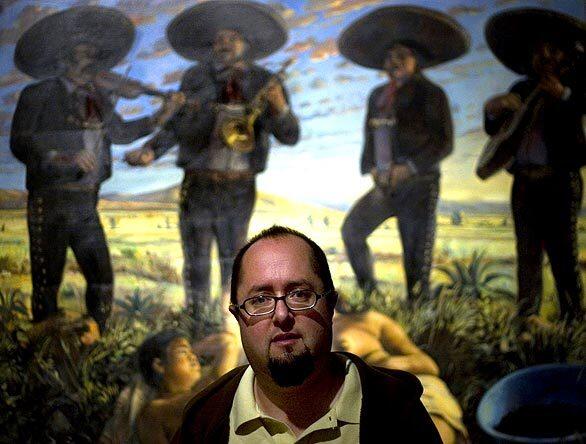
Art teacher Benjamin Torres discusses with his students the Lezama painting “La Madre Pródiga,” at an exhibit by the same name. The painting, commissioned for the show, is one of Lezamas characteristic provocations about a subject that figures prominently in his art: motherhood. For most Mexicans, motherhood is sacred, reinforced by centuries of social custom and spiritual belief, and symbolized by the Virgin of Guadalupe. For Lezama, motherhood is a more problematic notion. As a painter, he recognizes the pictorial power of the image of the Virgin, supposedly first seen in a vision by the Indian peasant Juan Diego in 1531. In the context of Mexican history, the Virgin has been both a symbol of spiritual salvation and the emblem of the Spaniards conquest of Americas indigenous people. (Sarah Meghan Lee / For The Times)

A visitor to the Mexico City museum studies Lezama’s “La Gran Noche Mexicana,” featuring pop singer Juan Gabriel in the white jacket. (Sarah Meghan Lee / For The Times)

A junior high art class discusses a Lezama painting titled “La Muerte del Tigre de Santa Julia.” “His art, on the one hand its very logical,” said Erick Castillo, curator of the artist’s Mexico City show. “On the other its very uncommon. Many people in the debate think that Daniel is a traditionalist painter, that he is a painter mexicanista. Lezama is among a handful of Mexicos best-known young and middle-age contemporary artists, a group that includes Gabriel Orozco and the ex-pats Melanie Smith and Francis Alÿs. His work has been shown both internationally and in some of Mexicos most important venues, and it addresses some of the most fundamental aspects of Mexican identity and history. (Sarah Meghan Lee / For The Times)








